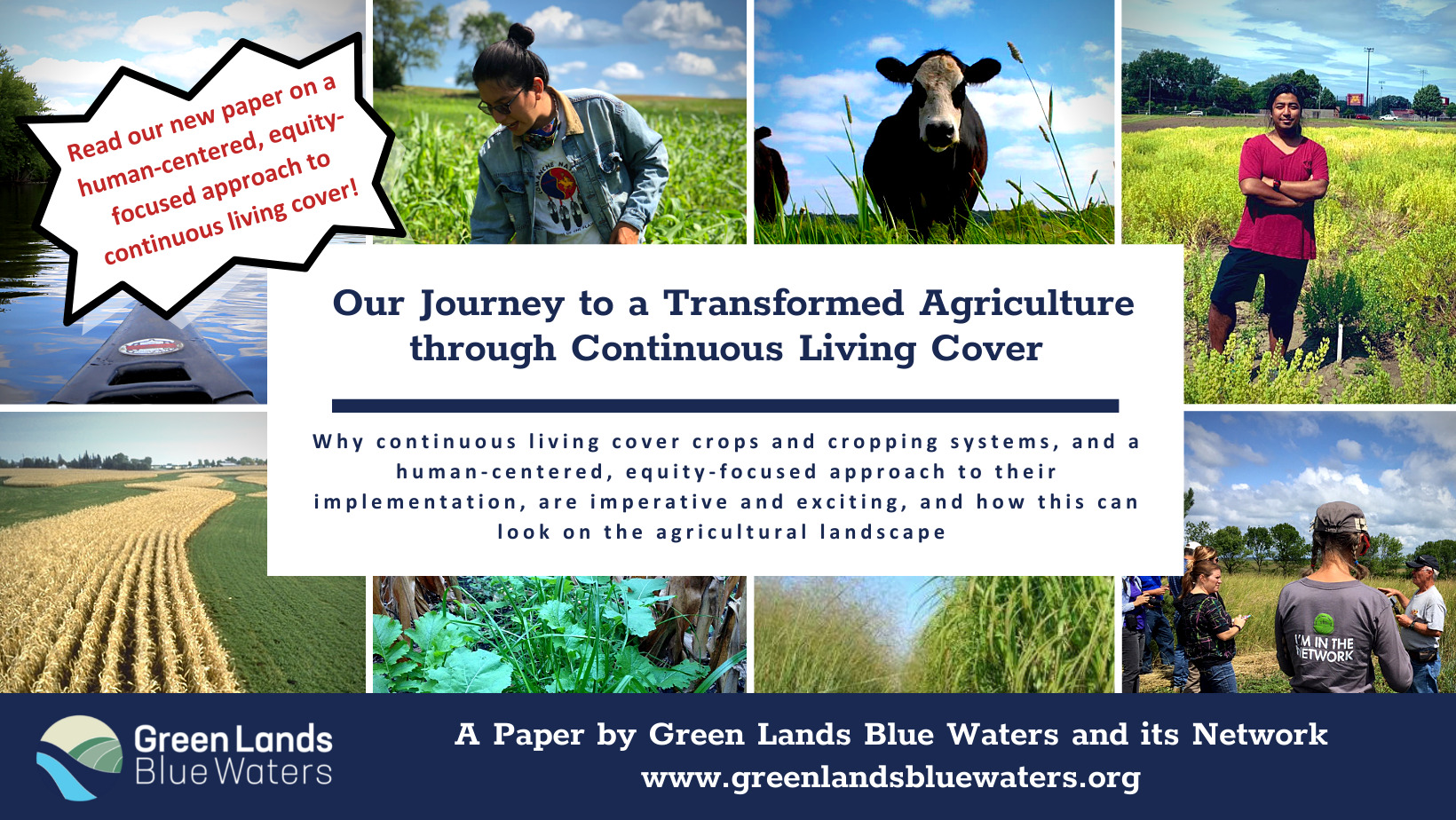
Human-Centered Approach
Executive Summary
Most of us can agree that the agricultural landscape should mutually sustain human and natural communities over the long term. And yet, we cannot deny today’s ecological conditions as a result of how we farm most of our acres in the United States: high levels of soil erosion and loss of topsoil; water quality impairment from agriculture-related pollutants in ground and surface waters; and agriculture’s contributions to climate change.
Our individual and collective goals have also long been about more than food and natural resources. Agriculture is about good lives for people. And so, agriculture needs to engage in straight talk on equity and justice. In particular, we need to acknowledge a history – and the enduring nature – of systematic discrimination, stolen land and broken treaties, slavery, and denied economic opportunities for Native Americans and farmers of color, and take meaningful steps to make it right.
Overall, farm systems that create human and ecological resilience are those that reintegrate plants and animals on the land and that create opportunity for all humans and communities to benefit, including those who have been long excluded. The crops and cropping systems that offer the most promising way forward share a common characteristic with each other and with the prairie and forest ecosystems that preceded them on the landscape: they provide Continuous Living Cover (CLC).
Deep-rooted perennials and other continuous living cover crops can be planted today to produce positive outcomes for the landscape moving forward. This includes strategies like agroforestry, perennial biomass, perennial forage, perennial grains, cover crops, and the integration and stacking of these practices. The reintegration of more diverse cropping systems into row crop country is critical. Diversity leads to resilience. This is true in our cropping systems and in social terms. Human diversity and diverse agricultural landscapes are not independent of one another; in fact, if we ever want to fully embrace either of these, we must embrace them both simultaneously. The central idea of this paper is that CLC, implemented equitably with people and communities at the center, can bring about both environmental and social changes sorely needed in agriculture. Envision agriculture as a solution.
How might we achieve the bold and sweeping changes to agriculture that we are suggesting?
Large-scale change is needed to address complex and intractable problems. As with many things, these changes spark to life and become most visible through the actions of committed individuals on the ground. Across the paper, you’ll read the stories of people and organizations making change possible today and embracing the idea that human diversity and diverse agricultural landscapes must be recoupled and nurtured together to support a new future for agriculture.
Both grounded individual efforts and collective pressure on big system levers are required to bring about a new agriculture. We offer these key strategies to support a more equitable agricultural landscape where continuous living cover abounds. This paper describes how…

This paper is not a policy brief or a marketing strategy. It is not an in-depth analysis of agriculture, biologically or socially. It is about stories. It’s an endeavor to provide a cross-sectional look at guiding principles in action, examples of inspiration, and lessons learned from the past.
Read stories from the heart of Iowa, like how farmer Mark Peterson was gobsmacked by the results of adding cover crops to one of the lowest fertility areas of his farm or how the Severson Family was able to bring another generation back to the farm with the extra income from re-integrating livestock. Hear how an aunt-to-niece land transfer at Singing Hills Dairy is building a bridge for equitable land access and creating space for Black Minnesotans on the farm. Learn about stewardship practices on the Tsyunhehkw^ farm on the Oneida Nation in Wisconsin and about how the Intertribal Agriculture Council provides technical assistance and support for Native producers across the county. Hear from young scientists E. Britt Moore and Hannah Stoll about their plans to equip the next generation of agricultural professionals. Read about policy innovation in action, like the Illinois Fall Covers for Spring Savings program that took off at lightning speed in its second year, hitting full enrollment with farmers from across the state within 24 hours.
Get inspired by the stories of these and many other champions for a new agriculture.
Suggested citation for this paper:
Green Lands Blue Waters. Our Journey to a Transformed Agriculture through Continuous Living Cover. https://greenlandsbluewaters.org/wp-content/uploads/2021/08/OurJourneyToTransformedAgThruCLC-GLBW2021.pdf (2021).